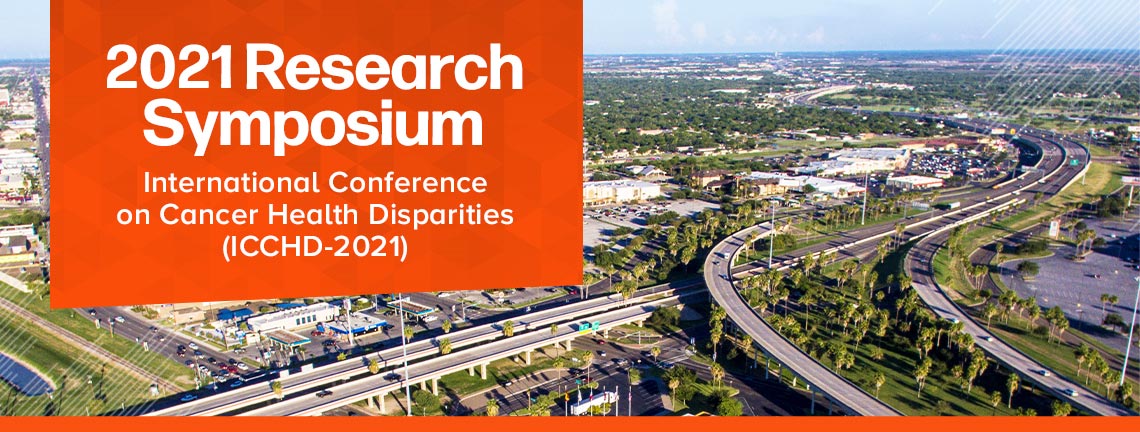
Posters
Presentation Type
Poster
Discipline Track
Biomedical Science
Abstract Type
Research/Clinical
Abstract
Background: Hepatocellular carcinoma (HCC) accounts for 85-90% of primary liver cancers. The Hispanic population had an incidence of 21.2 per 100,000 in Texas. Particularly, the Rio Grande Valley (RGV) is an underserved area facing disparities that increase risk factors of HCC and thus, yielding higher incidence and mortality. Therefore, early, faster, and inexpensive diagnostic biomarkers and methods are crucial to under-resourced areas such as the RGV. Recently, we have identified an extracellular cancer antigen, POTE-2. Preliminary data indicates high POTE-2 expression in HCC tumors. In this study, we will discuss the role of POTE-2 in HCC progression and its associated regulatory pathways.
Methods: The Cancer Genome Atlas (TCGA) database of HCC patients (n=371 tumor; n=50 normal) was analyzed. Liver cancer cells were procured from ATCC. POTE-2 mRNA and protein expression analyzed via RT-PCR and western blot. Absolute copy number was determined using Digital Droplet PCR. Lentiviral-based plasmids were used for overexpression and knockdown studies. Signaling pathways were analyzed using Proteome Profiler array.
Results: Comprehensive analysis of TCGA database revealed high POTE-2 expression tumors with upregulation in all stages of HCC. POTE-2 expression increases with nodal metastatic status leading to poor survival. The protein expression for POTE-2 was significantly higher in SK-HEP1 compared to C3A cells. Lentiviral transduction showed significant overexpression and knockdown of the POTE-2 protein. Modulation of POTE-2 expression led to changes in lncRNA and kinase pathways.
Conclusion: These studies will help discover novel mechanisms of POTE-2 protein function, signaling pathways and roles in liver cancer progression.
Recommended Citation
Lopez, Samantha; Doxtater, Kyle; Anilkumar, Adithya; Kotnala, Sudhir; Dhevan, Vijian; Chuahan, Subhash C.; and Tripathi, Manish, "Role of POTE-2 in hepatocellular carcinoma progression." (2023). Research Symposium. 87.
https://scholarworks.utrgv.edu/somrs/theme1/posters/87
Included in
Role of POTE-2 in hepatocellular carcinoma progression.
Background: Hepatocellular carcinoma (HCC) accounts for 85-90% of primary liver cancers. The Hispanic population had an incidence of 21.2 per 100,000 in Texas. Particularly, the Rio Grande Valley (RGV) is an underserved area facing disparities that increase risk factors of HCC and thus, yielding higher incidence and mortality. Therefore, early, faster, and inexpensive diagnostic biomarkers and methods are crucial to under-resourced areas such as the RGV. Recently, we have identified an extracellular cancer antigen, POTE-2. Preliminary data indicates high POTE-2 expression in HCC tumors. In this study, we will discuss the role of POTE-2 in HCC progression and its associated regulatory pathways.
Methods: The Cancer Genome Atlas (TCGA) database of HCC patients (n=371 tumor; n=50 normal) was analyzed. Liver cancer cells were procured from ATCC. POTE-2 mRNA and protein expression analyzed via RT-PCR and western blot. Absolute copy number was determined using Digital Droplet PCR. Lentiviral-based plasmids were used for overexpression and knockdown studies. Signaling pathways were analyzed using Proteome Profiler array.
Results: Comprehensive analysis of TCGA database revealed high POTE-2 expression tumors with upregulation in all stages of HCC. POTE-2 expression increases with nodal metastatic status leading to poor survival. The protein expression for POTE-2 was significantly higher in SK-HEP1 compared to C3A cells. Lentiviral transduction showed significant overexpression and knockdown of the POTE-2 protein. Modulation of POTE-2 expression led to changes in lncRNA and kinase pathways.
Conclusion: These studies will help discover novel mechanisms of POTE-2 protein function, signaling pathways and roles in liver cancer progression.

